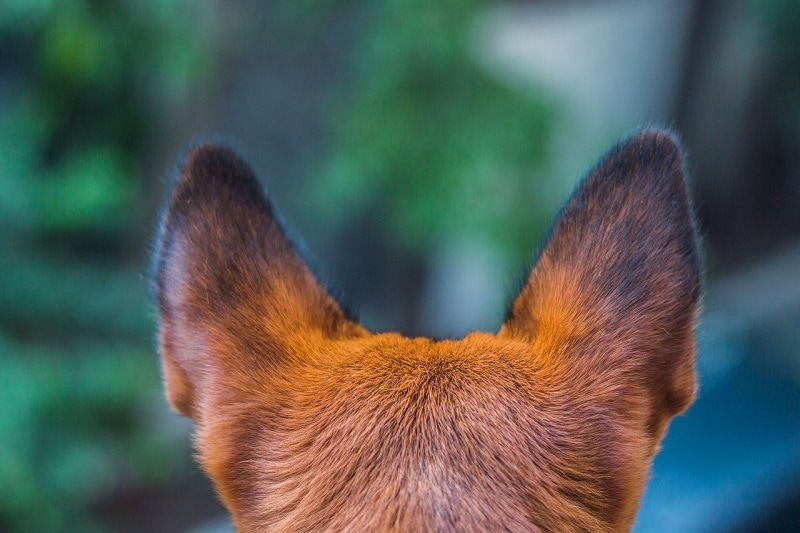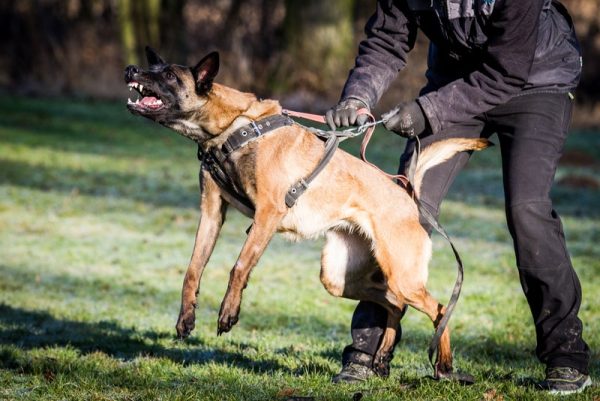In this article
View 3 More +Deafness in dogs can refer to a partial or complete loss of hearing, which can be temporary or permanent. Temporary deafness can be caused by a buildup of debris and inflammation in the ears, and once cleaned and treated, hearing can return. As for permanent deafness, there are many possible causes, such as trauma or congenital disabilities.
Hearing impairment in dogs is not as uncommon as you may think. In fact, there is a decent chance that your dog may lose some or all of his hearing as he grows older. In this article, we’ll discuss six surprising facts about deaf dogs, so keep reading to learn more.

The 6 Facts About Deaf Dogs
1. Over 30 Dog Breeds Are Prone to Deafness
Deafness can be a congenital condition, which means that it can be present from birth. It can also be hereditary, making it more prevalent in certain breeds. In fact, over 30 breeds have been determined to be more vulnerable to hearing loss.
Studies have shown1 that congenital deafness has been observed in over 100 breeds.

2. Deaf Dogs Can Be Trained with Hand Signals
Many people mistakenly believe that deaf dogs cannot be trained; however, that couldn’t be farther from the truth. While deaf dogs cannot hear verbal commands, they can usually see just fine. Instead of using verbal commands with your dog, you can show him hand signals to indicate what you want him to do.
Many people like to use American Sign Language (ASL) for this purpose. Instead of saying “sit,” a dog trainer can display the associated sign for their dog to see.
3. There Are Many Potential Causes of Deafness in Dogs
Whether temporary or permanent, there are several causes of deafness in dogs. Two of the main ones include conduction issues and nerve complications. Conduction issues refer to the inability of sound waves to reach the inner ear.
Sound waves can be blocked from reaching the inner ear due to inflammation of the outer or middle ear, the narrowing of the ear canal, a ruptured eardrum, or tumors.
Nerve complications can occur due to degeneration of the nerves, trauma, toxins, tumors, or anatomic disorders.
4. Deaf Dogs Are Not Uncommon
As mentioned, deaf dogs are not as uncommon as you may think. Unfortunately, as much as 10% of the pet population is made up of deaf dogs. Although your pet may not suffer from hearing loss, it’s best to maintain regular veterinary appointments and contact your vet if you notice changes in your dog’s hearing.

5. Dogs Typically Compensate Well
If you discover that a dog you know is deaf, there’s no reason to be sad. Like humans, dogs can live long and happy lives if they are deaf. This is especially the case if your dog was born deaf. Rather than being sad about his lack of hearing, your dog adapts to life this way by compensating with their other senses such as vision and smell.
However, there are circumstances where a dog may be agitated by his loss of hearing, especially if it occurs suddenly. You may notice behavioral changes in your dog, such as heightened anxiety. During this time, your dog will greatly appreciate your reassurance.
6. Coat Color Can be Linked to Deafness
Many breeds are predisposed to deafness, but there are also certain coat pigments that may put your dog at a higher risk of deafness, including white, piebald and merle.
Piebald pigments are characterized by patches of black and white (or other colors) and are sometimes called “parti-colored.” Merle is a patchy, mottled coat pigment that is more unusual. Although little is known about the prevalence of hearing impairment in merle or merle-carrying dogs, further research could confirm the connection.


Signs of Deafness in Dogs
Do you suspect your dog or a dog you know is experiencing hearing loss? Check for the following signs of deafness and see if any of them sound familiar:
- Unresponsive to auditory stimuli
- Does not react to their name
- No longer responds to commands, appears “disobedient” suddenly
- Reduction in activity
- Excessive barking
- Frequently shaking or tilting head
These are just some of the signs that your dog may display if he is experiencing hearing loss. If you notice one or more of these in your dog, consult your vet.
How to Confirm That Your Dog Is Deaf
The only way to confirm that your dog is deaf is to take him to the vet for a thorough examination. Your vet will study your dog’s ear canal for any structural or debris-related irregularities. Another test that your vet may recommend at a specialist center is the Brainstem Auditory Evoked Response test (BAER). The BAER test records electrical activity in the brain to verify if it is responding to sounds.
If you have any concerns about your dog or their health, it's recommended you contact your vet directly.

Living With a Deaf Dog
While it is certainly an adjustment to get used to living with a deaf dog, over time, it can become natural to you.
- Monitor your dog’s activity: While all dogs should have regular supervision, it is especially important to watch over your deaf dog. A Deaf dog cannot hear animals, cars, or other possible threats, so it is up to you to protect him.
- Approach your dog non-threateningly: Now that your dog cannot hear as well, you may accidentally sneak up on him and startle him. To let him know that you are approaching, stomp your feet so he can feel the vibrations of your footsteps.
- Never let your dog outside alone: Leaving your deaf dog unsupervised is a recipe for disaster. Attaching a bell to your dog’s collar can help you locate him if he ever gets lost.
- Keep your dog in the loop: Some deaf dogs grow anxious when they can no longer see their owners, such as when you step into another room. You can inform your dog of your whereabouts by touching his shoulder so he can see you come and go.

Conclusion
Deaf dogs are just as capable as dogs that can hear, and many deaf dogs behave as if they don’t realize they are missing one of their senses. Since deafness in dogs is relatively common, it is wise to know as much about it as possible in case you ever encounter a deaf dog. We hope this article has helped you learn more about hearing-impaired dogs and perhaps given you the preparation you need to better interact with a deaf dog in your life.
Featured Image Credit: Vera Zinkova, Shutterstock




















